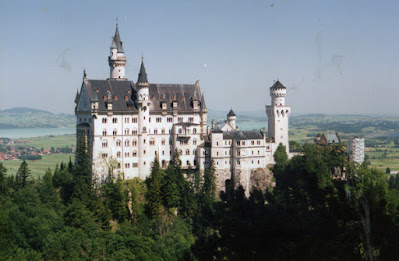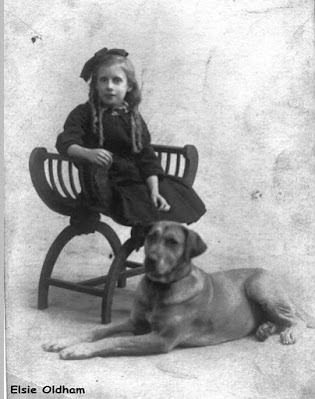This week's Sepia Saturday prompt photograph features swans on a river bank, with a bridge in the background. What should I focus on ? A trawl through my holiday collections - not vintage images but with plenty of historical interest.
I begin with the Swan theme.
 | | | | | | |
|
|
| | Swans and Cygnets at Hawick in the Scottish Borders where we lived for 40 years. |
|
Across to the Continent of Europe
18th century Nymphenburg Palace , Munich, Bavaria
This was the birthplace of King Ludwig ll of Bavaria who was often referred to as the Swan King and adopted the Swan as one of his symbols.
One
of the most distinctive and most visited places in Bavaria, Southern Germany has to be
Neuschwanstein Castle. (in Engish the New Swan Stone Castle.
Built in the 19th century above the Swansee (Swan Lake) it served no defensive purpose, but was one of four
fantastic castles commissioned by King Ludwig. It was opened
to the public shortly after his death in 1886; provided the inspiration
for the Disneyland castle, and features in the film "Chitty, Chitty Bang
Bang". You can walk through the extensive grounds and this photograph
was taken from the high outlook of the Mariabrucke (Maria bridge).

Swan boats on the Hallstatter See, near Salzburg in Austria.
Swan boats on Lake Bled in Slovenia
Take a journey through my photographic collection of bridges & rivers across Europe and the USA.
Ramsau was designated Germany's first mountaineering village and is a small community near Berchtesgarten in Bavaria, close to the Austrian border. The church of St. Sebastian was built
in 1512 and extended in 1692 in the baroque style. Ramsau is one of the most photogenic images
of rural Bavaria and this has to be one of my favourite holiday
photographs.

Wooden steps up to a covered bridge in Kaprun, Austria.
An old bridge in Bruges, Belgium.
Another old bridge, taken by my uncle on holiday years ago in what was then Yugoslavia - now Croatia.
Bridges over the River Seine in Paris.

A reconstruction of the old wooden North Bridge at Concord, Massachusetts, USA, where
in 1775 local Minutemen fired the first shot in the American War of
Independence and forced the British to retreat back to Boston.

A traditional covered wooden bridge in New Hampshire, New England.
London
Tower Bridge over the River Thames in London with HMS Belfast in the foreground.
Tower Bridge is one of London's iconic landmarks built in the Victorian Gothic style. It was opened in 1894, with two walkways linking the two towers. The road can be raised and "opened" to allow tall shipping to pass through. The Bridge is open to the public and you can walk along the top glass-covered walkway and take in fantastic views over London - we have done it!
HMS Belfast, launched in 1938 is a cruiser that was built for the Royal Navy. The ship saw active service during the Second World War, primarily supporting the Arctic Convoys on the trade routes to Russia. She is now permanently moored as a visitor attraction museum on the River Thames.
Westminster Bridge over the River Thames with the Houses of Parliament in the background, wsith the clock tower of Big Ben.
The current Houses of Parliament, also known as the Palace of Westminster, was rebuilt after a major fire in 1834. The oldest part of the building which survived the fire is Westminster Hall built in 1097 by William ll, son of William the Conqueror and used for national ceremonial occasions and the lying in state of Kings and Queens.
The first Westminister Bridge opened in 1750, with the second in 1862. It is the oldest road structure which crosses the Thames in central London.
"Earth has not anything to show more fair" is the first line of a poem composed by William Wordsworth on Westminster Bridge in 1802.

A silhouette of the Houses of Parliament with the River Thames in the foreground.
Sepia Saturday gives bloggers an opportunity to share
their family history and memories through photographs
Click HERE to see what other bloggers have spotted in this week's prompt photograph.




















































